1. Rheumatoid arthritis results from a complex interplay between genetic and environmental factors that lead to a breakdown of immune tolerance. This allows the immune system to attack citrullinated proteins in the joints.
2. The HLA-DRB1 locus is a major genetic risk factor, and smoking can interact with these risk alleles to increase levels of anti-citrullinated protein antibodies (ACPAs).
3. Inflammation initially develops in the synovium due to local factors that are not fully understood. This drives further immune cell infiltration and joint damage through processes like neoangiogenesis and an imbalance of T cell subsets.

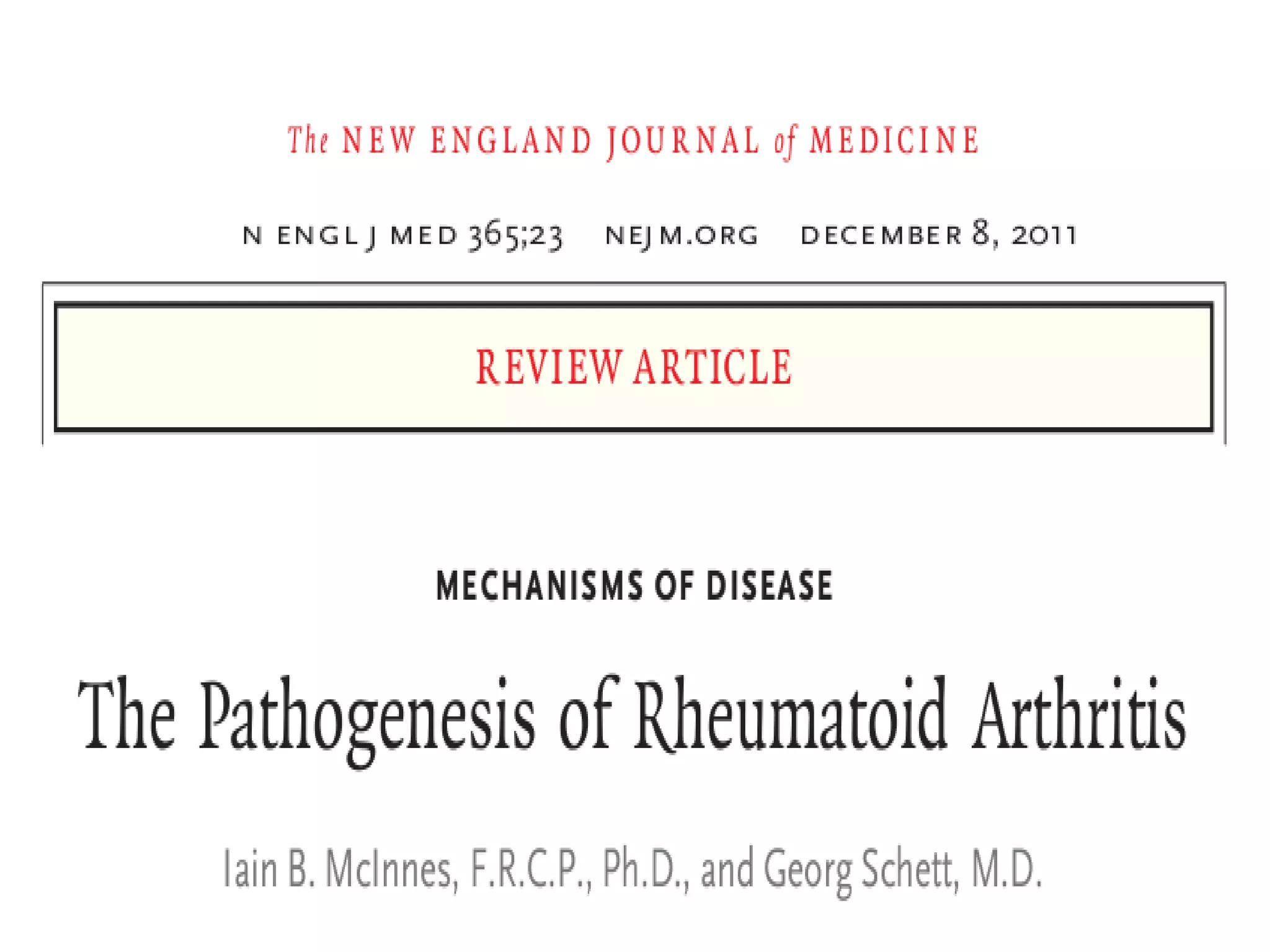





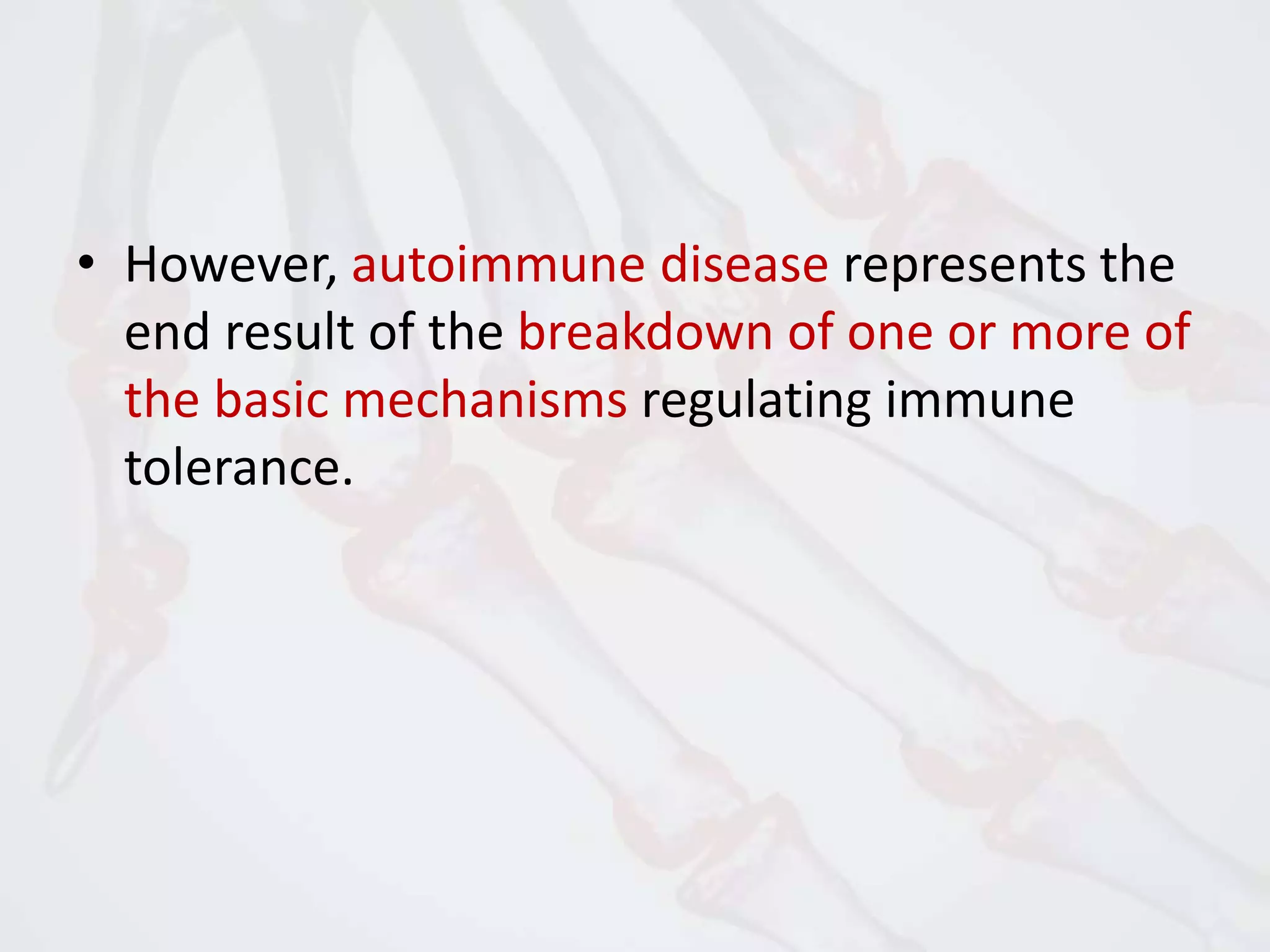













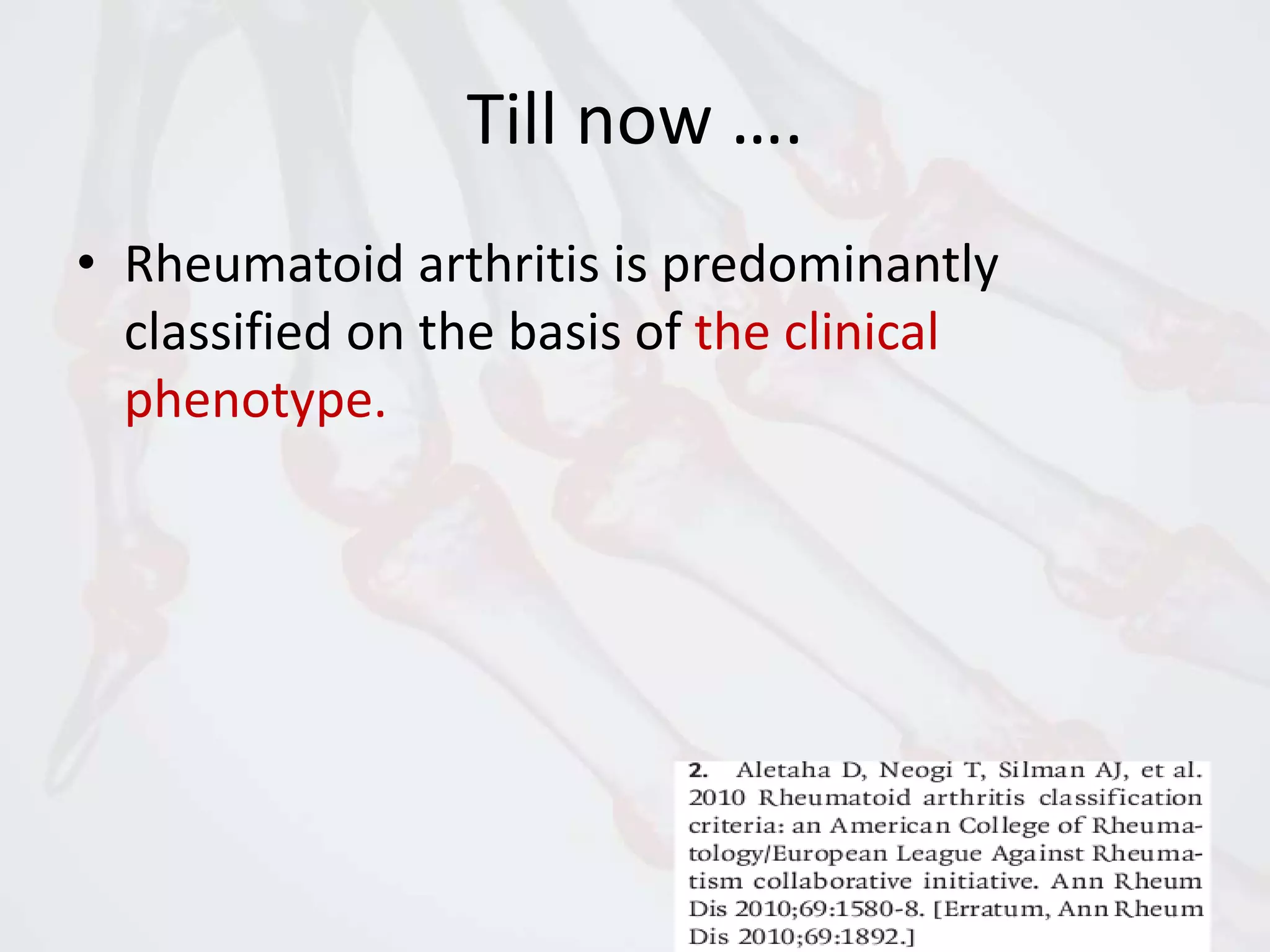

![RA is characterized by
• synovial inflammation and
hyperplasia(“swelling”)
• Autoantibody production (rheumatoid
factor and anti–citrullinated protein
antibody [ACPA])
• Cartilage and bone destruction
(“deformity”)](https://image.slidesharecdn.com/rheumatoidpathogenesis-170129174410/75/Rheumatoid-arthritis-pathogenesis-24-2048.jpg)










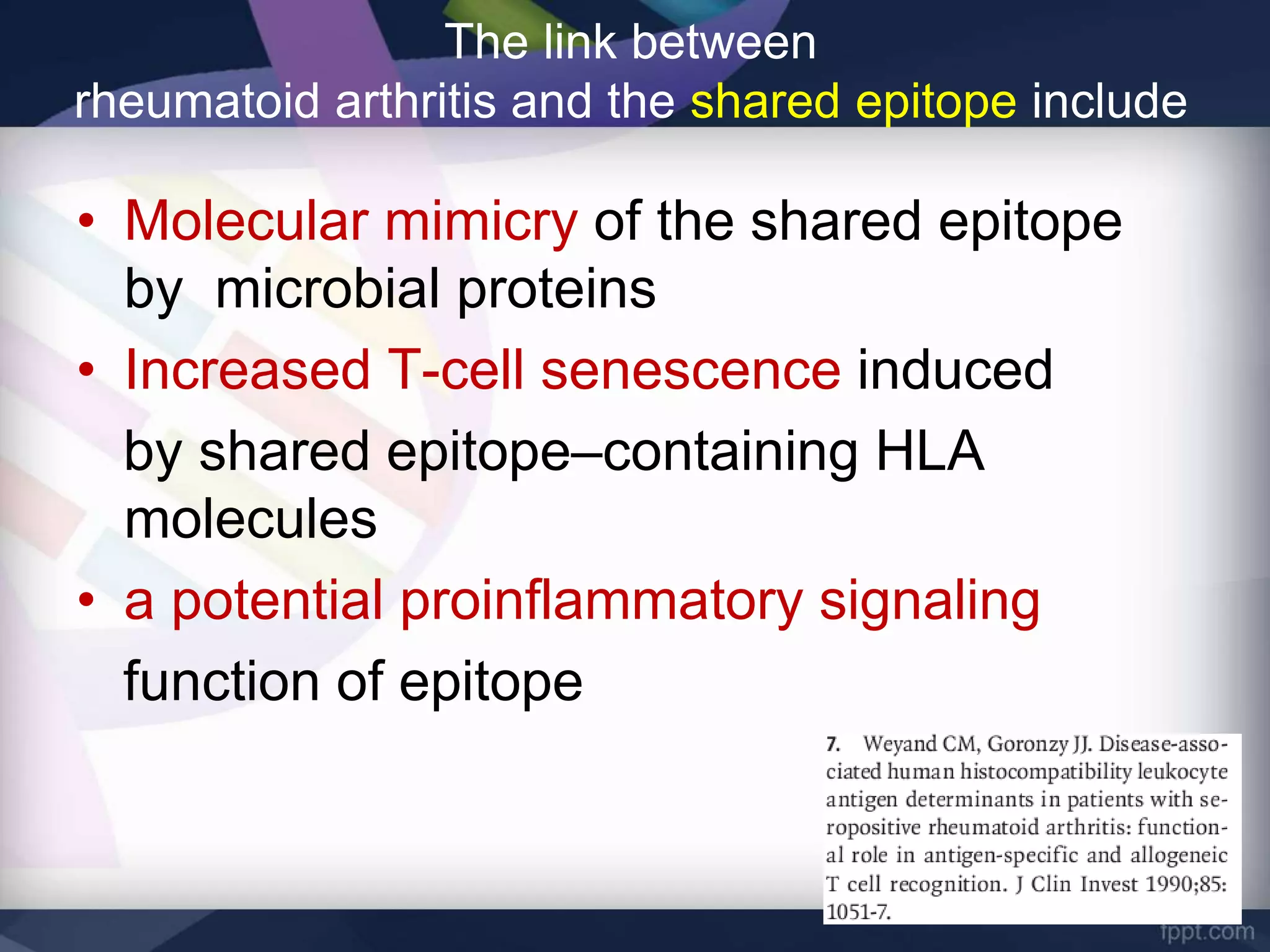

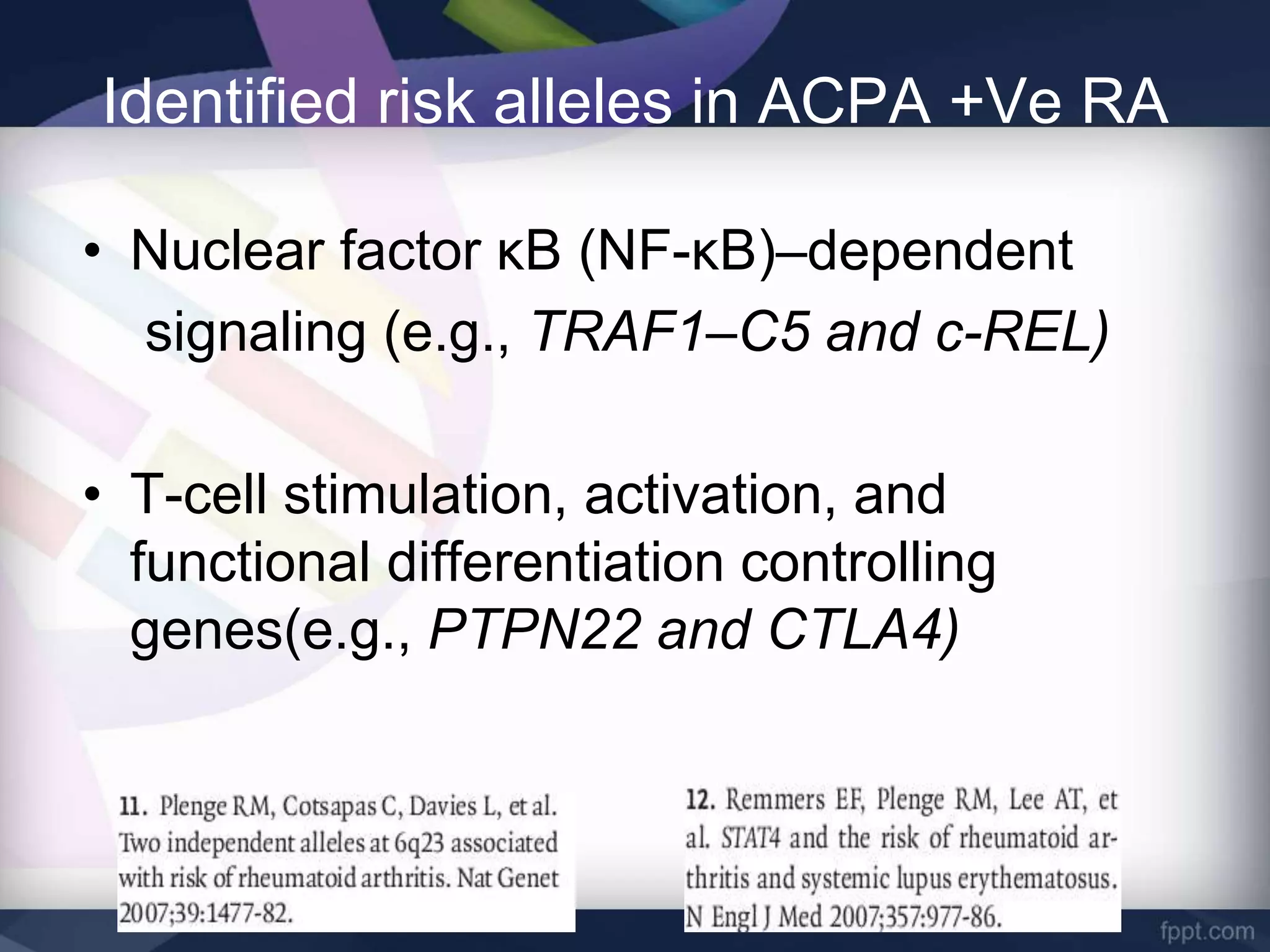













![• Loss of tolerance to such neoepitopes elicits an ACPA
response (which can be detected with a diagnostic anti–
cyclic citrullinated peptide [CCP] assay)
• Several citrullinated self-proteins are recognized in anti-CCP
assays including
• α-enolase,
• Keratin
• Fibrinogen
• Fibronectin
• Collagen
• Vimentin.
• Characterization of subsets of seropositive patients to elicit
true disease autoantigens is ongoing.](https://image.slidesharecdn.com/rheumatoidpathogenesis-170129174410/75/Rheumatoid-arthritis-pathogenesis-51-2048.jpg)






























![• Regulatory T cells (forkhead box P3 [Foxp3+])
that are detected in tissues from patients with
rheumatoid arthritis appear to have limited
functional capability.](https://image.slidesharecdn.com/rheumatoidpathogenesis-170129174410/75/Rheumatoid-arthritis-pathogenesis-82-2048.jpg)
































































